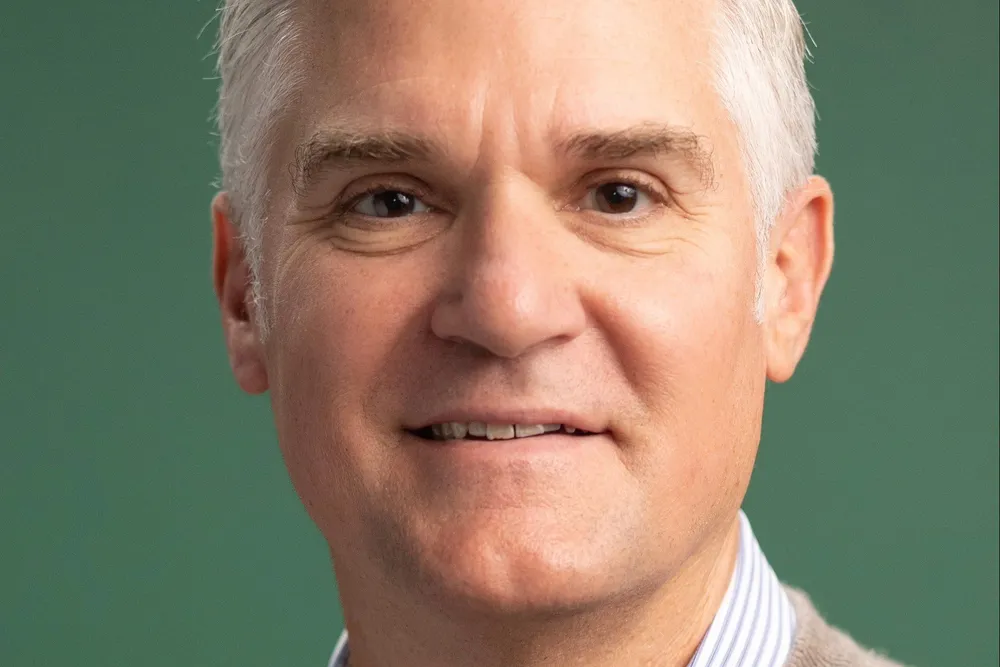How GE Vernova could return to offshore wind: CCO Hardy on 'workhorses and paper tigers'

Since GE Vernova pulled down the shutters, at least temporarily, on the prospect of any new offshore wind business, its future in the market – or even if it has one – has been the subject of intense debate.
David Hardy, GE Vernova’s chief commercial officer for wind, objects to the notion that GE Vernova is “out of offshore wind” at all, given the huge amounts of capacity it is putting in the water at the UK’s 3.6GW Dogger Bank array and 800MW Vineyard 1 project off the US.
“People ask, 'Are you in offshore wind?' I say yes. When your children turn 18, they’re still your children.
Completing those two flagship projects is the main offshore focus for GE Vernova. When Dogger Bank and Vineyard are done, Hardy said GE Vernova will have "more turbines in the ocean that are bigger than 12MW than any of our competitors. Dogger Bank will be 5% of UK power. It has got to be reliable.”
As for further business, Hardy says new sales of the 14.7MW turbine that will complete Dogger Bank – one of the small range of self-styled ‘workhorses’ that make up its on-and offshore fleet – are not out of the question.
“If a customer wanted to buy our 220 [-metre rotor] 14.7MW turbine for the right price and terms and conditions [for installation] in the late 2020s, we would probably be open to a discussion,” he said.
Whether that happens depends on the market as “we think the industry just needs to get more realistic about what is a target price for power for offshore wind. If that happens, we’re open to discussions.”
To Hardy, the bigger question facing all OEMs is “when do we develop the next generation of turbines?”
Developers have said, publicly and privately, that the absence of a third non-Chinese offshore turbine maker beyond Siemens Gamesa and Vestas would be a source of regret.
For Hardy, that customer interest is welcome – but not always realistic.
“I’ve had a lot of offshore meetings at this conference [WindEurope]. I talked to a developer and they said they need a 22MW turbine by 2032 to make the [project] economics work.
“I’m like, well, then your economics aren’t right. It’s too aggressive, it’s too risky, it’s not what we’re going to do.”
“We’re not marketing a paper tiger,” says the GE Vernova executive, in an apparent swipe at designs that cause a stir on a marketing brochure but have yet to see the light of day in the real world.
“There’s a whole lot more to offshore economics than a turbine – cost of capital, vessel costs, speed of installation, all those things matter.”
“There’s a lot more to the story than bigger is better. Bigger is risky.
“We’re trying to lead in offshore in a different way,” said Hardy.
“We just think the industrialisation is so much more important than getting the next big thing out there.”
Does that mean an ultra-large turbine is totally off the menu for GE Vernova?
“We’re always innovating and doing some engineering, and we’re keeping our options open, but we don’t have a lot more to say about next gen products.”
Vineyard wind blade break a 'catalyst' for new quality passport procedure
What about the prospects for US offshore wind, currently under the cosh from the policies of President Donald Trump?
The blade break at Vineyard Wind 1 last summer provided a highly visible symbol of the pressure the industry is under and prompted an urgent full-scale investigation into quality by GE Vernova itself.
“We’re super-focused on implementing all the learnings we’ve learned the hard way,” said Hardy. The blade incident was a “catalyst” for the development by the OEM of its ‘digital blade certificate’, a sort of quality passport that follows blades from the factory to the project site.
“Every single blade onshore and offshore we take a robot, we crawl inside the blade, video that full crawl, run through an AI algorithm to look for any defects. After we ship to site we do it again, after we install, we do it again.
“Every blade is inspected three times on the inside. This is a whole different level of quality assurance,” claimed Hardy.
As for the rest of the US offshore wind pipeline, “I’m hopeful the existing projects get completed, two of them were my old Orsted projects [Hardy was previously Americas CEO for the developer] that I have a personal attachment to, and want to get built
“In the short term beyond that I wouldn’t expect to see much.”
However, added Hardy: “Offshore is a long horizon sector, things move pretty quickly in the US. You could see a change in Congress in 18 months, you could see a change in administration in three and a half years.
“I still think that for certain parts of the US, offshore wind has a value proposition.”
(Copyright)